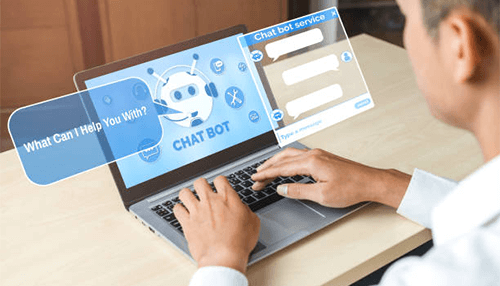Chatbots are a new and exciting way to engage with your customers. They have been popping up on major social media sites, such as Facebook Messenger, where they can be used for customer service purposes. There are endless possibilities for chatbot development, but one of the most popular uses is for small businesses looking for an affordable way to reach out to their consumers. This article from a cloud marketplace expert will discuss How to Build a Chatbot for Your Business!
What are the Benefits of Chatbot for your Businesses?
First, what is a chatbot? A chatbot is an artificial intelligence program that you can interact with on social media using messaging. It’s also known as “conversational marketing.” You may be thinking of how bots work right now and are already familiar with them, but there was a time when they weren’t so widespread! There are several benefits to having your business conversationalist.
First off, it provides 24/hr customer service where consumers don’t have the option of waiting patiently for someone to answer their calls during normal working hours. Secondly, leading companies like Sephora (which has had great success in this area) report that more than half of its customers who use the company’s Messenger bot end up spending more money with the brand than they have in the past. That’s because chatbots offer a more convenient and personalized shopping experience tailored to each customer.
Creating a Chatbot for your Business
Now that we know all of the wonderful benefits of chatbots, how do you create one for your business? The first step is deciding what features it should include. Here are some things to consider:
- First and foremost, make sure that your bot can converse in natural language. This means understanding questions and responding accordingly without sounding robotic or scripted. You’ll want to test it out on different people to ensure it works well!
- Your bot should be able to handle multiple tasks at once to serve multiple purposes. If someone asks about product availability, make sure the bot notifies the appropriate department to help them.
- The more personalized your chatbot experience, the better! Your customers want to feel like they are getting noticed and will appreciate it when you remember details about their lives or previous orders (e.g., “How’s your daughter? She must be excited about summer break!”).
Marketing your Chatbot to your Customers
Now that you have a great chatbot ready for action, how do you market it properly? The first step is getting people interested in using it in general – this means creating awareness around its existence on social media platforms where many of our users already hang out! You can’t expect much success if nobody knows it exists!
Once people know about your chatbot, you’ll need to convince them that it’s worth their time. This is where things like customer service value and convenience come into play – make sure to emphasize the benefits we mentioned earlier!
Finally, keep in mind that chatbots are still a new technology for many people. They may be hesitant to try something they’re unfamiliar with, so be prepared to offer a little bit of education on what chatbots are and how they work. You may also want to consider creating helpful guides or video tutorials explaining how best to use your bot.
Potential Challenges of Chatbot Use for Businesses
Despite all of the amazing potential chatbots have for businesses, there are some challenges you may run into along the way.
First, some people are still wary about using chatbots because they think they are impersonal or unhelpful. This is where education can come in handy! Show people how your bot works and why it’s worth their time to use it instead of calling customer service directly on the phone.
Secondly, if your company only has limited resources available, building a new system like this might not be possible right now due to budget constraints or lack of personnel training for proper implementation. It’s important that whoever interacts with customers knows what information should go through the chatbot (e.g., FAQs) and which requests need to bypass its programming completely (e.g., account logins, returns, and exchanges).
Finally, chatbots are not perfect and can still make mistakes. This is why it’s important to have a customer service team in place to help resolve any issues that may arise with your bot.
Overall, chatbots offer a lot of potential for businesses – from increased convenience and efficiency to more personalized customer service. While some initial challenges may be involved in getting them up and running, the benefits far outweigh these minor hurdles. So what are you waiting for? Start building your very own chatbot today!



